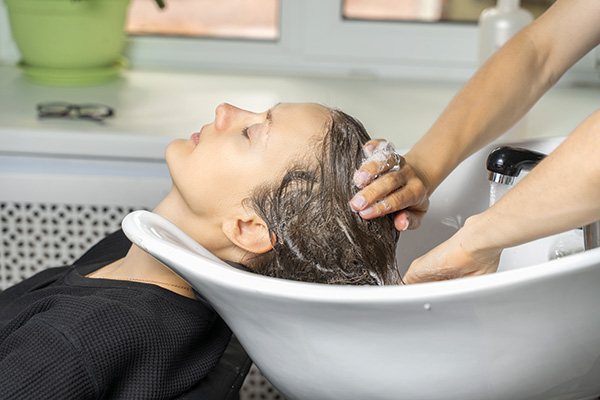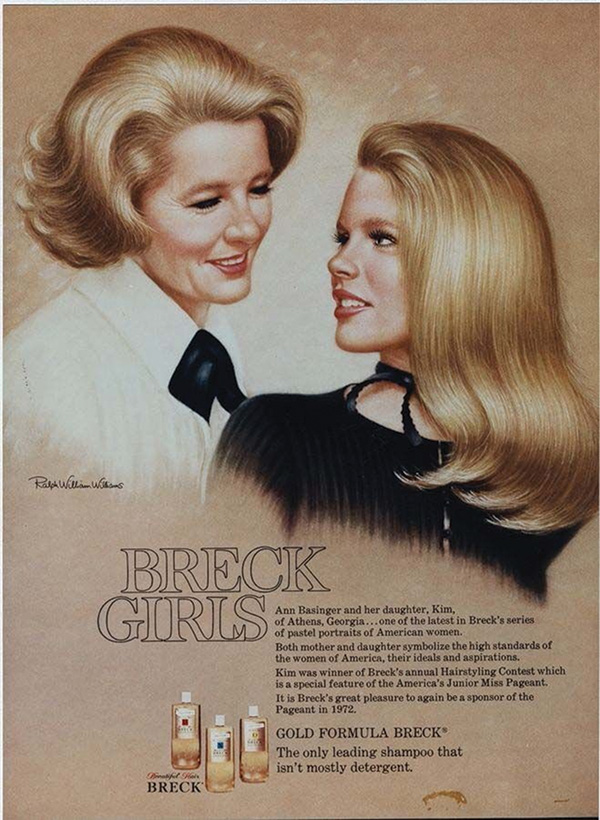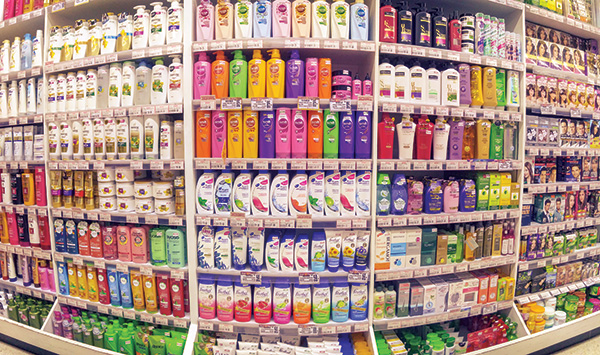
BEFORE THE 1900’S, PEOPLE USED VEGETABLE STARCH AND APPLE CIDER VINEGAR TO CLEANSE THEIR SCALP AND REMOVE EXCESS OIL. IN 1930, JOHN BRECK INTRODUCED THE FIRST LIQUID SHAMPOO IN THE US. IT CONTAINED 14 INGREDIENTS, COMPARED TO 24 IN MOST SHAMPOOS TODAY.
Breck shampoo became extremely popular in the following decades, due to advertisements that featured up-and-coming celebrities like Brooke Shields, Christie Brinkley, and Cybill Shepherd.
The main message of these campaigns was you must shampoo multiple times a week if you want to have healthy hair. Other companies began to jump on the bandwagon, and the shampoo industry exploded.
Shampoo is the most basic part of your hair routine, and can be the most complicated. If you identify your hair’s most pressing needs and understand the ingredients that best address them, you will be lead to the perfect formula for you.
WHAT IS SHAMPOO AND HOW DOES IT WORK?
Today, shampoo is usually a liquid. Your typical formula contains surfactants—like sodium lauryl sulfate or sodium laureth sulfate—which emulsify oil and dirt on the hair and scalp. The loosened debris is then swept away when the hair is rinsed. Most formulas contain some kind of preservative to inhibit microbial growth, and some have fragrance to provide that fresh-from-the-salon smell.
HOW TO USE SHAMPOO CORRECTLY
Believe it or not, there is a right and wrong way to shampoo your hair. In order to get the most out of your wash, first drench hair with water. The wetter the hair, the less shampoo you will need. Take about a tablespoon of shampoo into your hands and begin applying it to your scalp. Concentrate your shampoo on your scalp because that is where most oil is produced and most noticeable. Lightly wash through the rest of your hair. Avoid piling hair on top of your head when lathering up—you’ll create tangles. Simply massage in an up and down or side to side motion with the tips of your fingers. Once your scalp is scrubbed, rinse thoroughly. If you hold a section of your hair it should squeak a little when you run your fingers over it. Chemists at TRI Princeton found that rinsing with cold water did not increase sheen. If you use conditioner, apply a little on the ends and continue rinsing.

WHAT TYPE OF SHAMPOO SHOULD YOU USE?
Choose your shampoo according to your hair type: normal, oily, dry, or silky. Some shampoos specialize in removing dandruff, others can help straighten hair, while other shampoos create volume. Only a small group need to shampoo daily, those with fine hair, someone that exercises a lot, or someone with very oily hair. The thicker your hair, the less you need to shampoo.
TYPES OF SHAMPOO
• Regular: Designed for those who don’t have any specific needs.
• Clarifying: Removes stubborn buildup, do not use when dyeing hair
• Anti-Breakage
• Purifying
• Dry
• Moisturizing
• Volumizing
• Dandruff
That said, there are eight billion shampoos on the market and sifting through to find your match is a massive undertaking.

INGREDIENTS TO AVOID IN YOUR SHAMPOO AND CONDITIONER
• Sulfates: Help a shampoo strip oil and dirt away from the hair. However, the hair needs to retain a bit of its natural moisture and oils to stay healthy. Sulfates may strip away too much moisture, leaving the hair dry and unhealthy and the scalp dry and prone to irritation.
• Parabens
• Polyethylene Glycol
• Formaldehyde
• Synthentic Fragrances And Colors
• Dimethicone
• Retinyl Palmitrate
The most popular shampoo
Head & Shoulders is the most sold shampoo in the world. They sell 29 million bottles per year!
THE TOP 3 SHAMPOOS OF 2021 FOR ALL HAIR TYPES
• Pureology Strength Cure Strengthening Shampoo
• Paul Mitchell Lemon Sage Thickening Shampoo
• L’Oreal Paris Frizz-Defy Shampoo.



